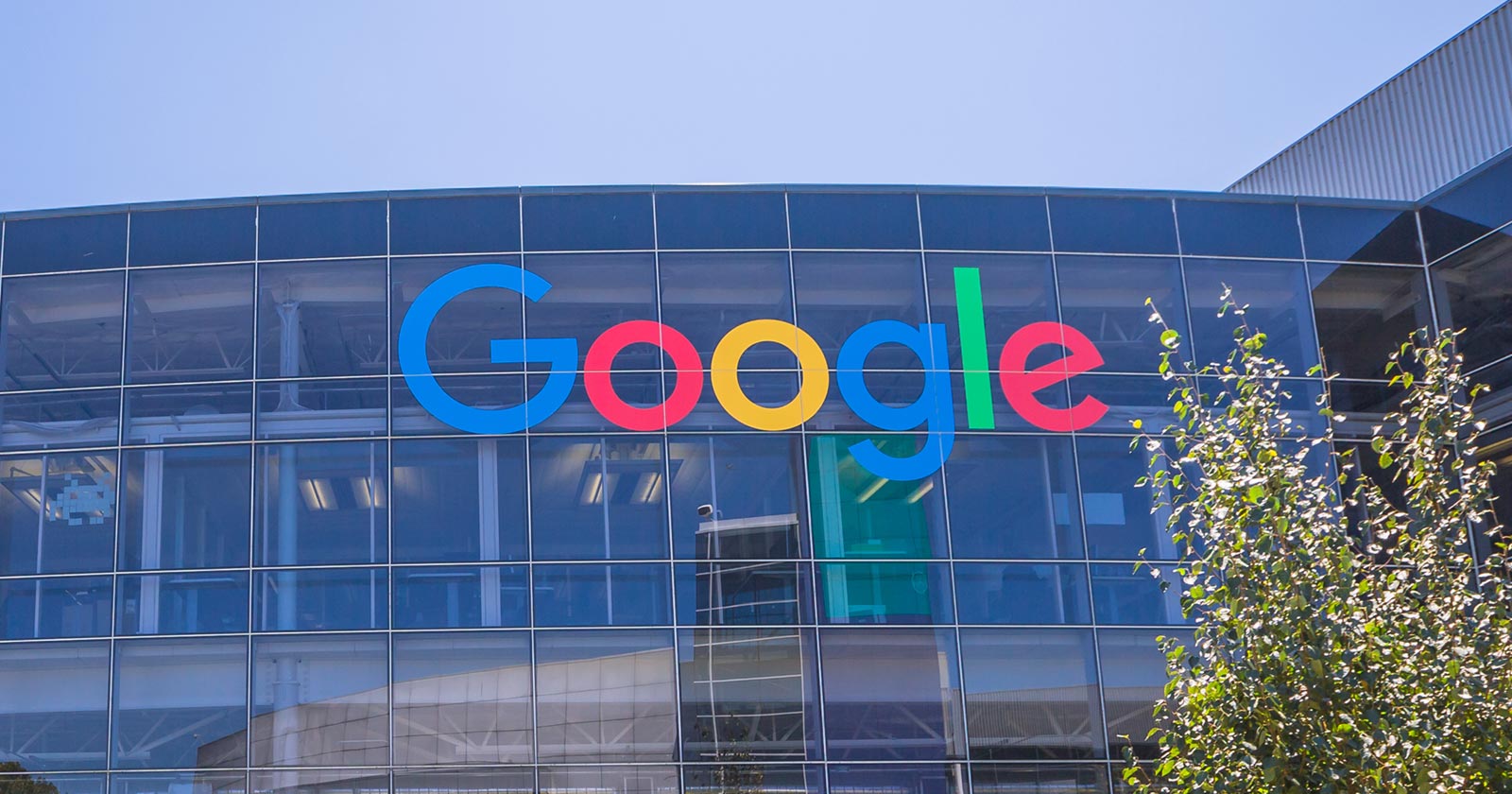SEO
10 Shopify Store Examples To Inspire Your Ecommerce Strategy
You’ve done the hard part – you’ve developed a product, bought the domain name, found the manufacturer, and your inventory is set to go.
Unfortunately, without a functional and, yes, pretty Shopify store, you may not see the success you deserve.
A Shopify store is not only the way you present your product to your target audience but also the place where you can generate sales.
A great Shopify store is many things:
- It looks nice. This means that the information is easy to understand, and your products are showcased with professional photos. This is where a great theme comes into play (more on that later).
- It navigates well. This means that it’s easy for your website visitors to immediately know where they can find the answers to their questions, where they can contact you if needed, and where and how they can make a purchase.
- It is set up for SEO. We all know you write for users and not robots, but SEO still matters for a Shopify site. We won’t detail SEO tips in this article, but visit here for more information about how to optimize your store for search.
If you’re just getting started, the easiest way to understand what makes a good Shopify store is to see examples of those doing it best.
This can help inspire how to set up your store and your ecommerce strategy as a whole.
How many touchpoints until you hope to see a purchase?
Which pages will you run remarketing ads on?
What photos are most successful and should be shared on social media?
These are all aspects of your ecommerce strategy that can start with a great Shopify store.
Below are some of our favorites and why we love them so much.
While some of the bigger sites might use a custom Shopify theme (where you can still draw inspiration!), if we could find the Shopify theme used, we added that for you below:
1. Greyston Bakery
Located in Southwest Yonkers, New York, this B-Corporation is best known for baking the brownies you enjoy in a Ben & Jerry’s Chocolate Fudge Brownie ice cream.
The company prides itself on offering personal development tools and professional training to give anyone who works there the best chance of success.
It accepts all applicants regardless of previous incarceration, homelessness, or drug use.
A truly inspiring place with an amazing product, this is #1 on our list for a reason.
We love the use of colors and bold CTA immediately when you arrive on the website.
The “shop by price” is also a great feature that you don’t see on every ecommerce store, but a quick and easy way to get people to what they want without having them sift through something out of their price range (which can often lead to a bounce).
2. Happy Organics
 Screenshot from Happy Organics, July 2022
Screenshot from Happy Organics, July 2022
Happy Organics is a three-generation business of beekeepers.
First started in Mexico, the company began when the father of the family was diagnosed with cancer, and could no longer tend to the bees.
So, his children found a way to use this same honey, and infuse it with CBD to improve his pain.
As it turned out, there was a long list of therapeutic benefits to CBD and honey, which you can read about more on their site.
As you can see on their site, the words “Bundle & Save” are first in the menu.
This typically draws a visitor’s eye and drives traffic to the page.
The company likely wants people to visit this particular page because it saves the customer money by bundling and allows Happy Organics to upsell.
It’s a win-win.
- Shopify Theme: Superstore.
3. Bombas
 Screenshot from Bombas, July 2022
Screenshot from Bombas, July 2022
Another classic, Bombas got its start on Shark Tank.
Despite Shark Daymond John saying he immediately tuned them out and was thinking about the next pitch, the quality of their socks won him over.
Bombas has since expanded beyond just socks and is currently the most successful company to come out of the show.
The best part?
A portion of its proceeds are donated and always have been.
In terms of its Shopify store, Bombas is dialed.
It keeps it simple with different categories and doesn’t clutter up the menu with different options.
If you visit Bombas’ site, you’ll see lots of well-placed CTAs that allow the visitor to clearly understand their options while nudging them to buy (note the “get 20% off” link at the bottom!).
4. Patagonia
 Screenshot from Patagonia, July 2022
Screenshot from Patagonia, July 2022This is a company you’ll see on many “best Shopify sites” because its shop is complicated (it has quite a few products!), but organized beautifully with sections and subsections.
Not only does Patagonia guarantee everything it makes, but the team focuses on environmental and social responsibility, and pledges 1% of sales to the preservation and restoration of the natural environment.
As one of the largest outdoor brands, Patagonia does a fabulous job illustrating what makes the company unique and makes it easy to find what you need in just a few clicks.
5. Cheekbone Beauty
 Screenshot from Cheekbone Beauty, July 2022
Screenshot from Cheekbone Beauty, July 2022
Cheekbone Beauty has a great story, and it makes sure to highlight that right on the homepage of its Shopify store.
All of the company’s products are vegan and cruelty-free, and it has a commitment to become waste-free by 2023.
The kicker?
Not only is Cheekbone’s product sustainable and good for the environment (it uses 85% less plastic than traditional lipstick tubes), but the team donates 10% of their profits each year.
- Shopify Theme: Blockshop.
6. Pipcorn
 Screenshot from Pipcorn, July 2022
Screenshot from Pipcorn, July 2022
Pipcorn/Pipsnacks is another Shark Tank find.
After appearing on the show, the brand’s sales increased from $200k to $1.1 million and saw 12,000 orders come through – roughly 11,000 more than it had ever had.
It’s safe to say Pipcorn kept the momentum going, and it is now one of the top popcorn brands on the market.
The company reimagined popcorn by using heirloom corn because it is more environmentally sustainable (and also more nutritious).
One thing we love about this store is the emphasis it puts on the family-owned aspect of the product – and if you visit Pipcorn’s blog, you’ll see that it also supports other small family-owned businesses.
The shop also puts discounts in just the right places and has recommended items to add after viewing your cart, making it very easy to buy!
- Shopify Theme: Starter theme.
 Screenshot from Olipop, July 2022
Screenshot from Olipop, July 2022
Visit the Olipop website and you’ll see rotation offers at the top of your screen – the only one on this list to do so – and a very simple design.
Olipop tastes like your traditional soda, but supports microbiome and digestive health support with plant fiber, prebiotics, and botanicals.
According to Shopify, when considering your Shopify store,
“Consider how you want customers to feel when they shop with you. Do you want them to feel relaxed and summery? Or what about warm and cozy? The colors you use will influence how shoppers feel, so use your palette wisely.”
Olipop is the perfect example of a brand putting an emphasis on color.
8. Tasty Tie
 Screenshot from Tasty Tie, July 2022
Screenshot from Tasty Tie, July 2022
These baby ties with teether’s on the end are oh-so-cute, but they also have a great Shopify store to boot.
As you scroll down the page, you’ll notice that this store is all about the features and benefits.
While it’s immediately clear what the product is, there are many less obvious benefits that are also listed right there on the homepage.
For example, the tie has a crinkle material (something you clearly cannot see in a photo), and the page’s content paints a picture of why that matters.
In short, this is a good place to start if you’re looking for content inspiration for your Shopify store.
9. Allbirds
 Screenshot from Allbirds, July 2022
Screenshot from Allbirds, July 2022
This example and the next one on our list are widely considered great Shopify store examples, and for good reason.
Allbirds’ store features great photos, bright colors, easy navigation, and also outlines the company’s sustainability approach with clear initiatives:
- Reverse climate change.
- Improve carbon footprint.
- Regenerative agriculture.
- Use renewable materials.
- Offer carbon offsets.
- Focus on responsible energy.
Allbirds has created a page for each of these initiatives with all the necessary details. Truly inspiring.
10. Ruggable
 Screenshot from Ruggable, July 2022
Screenshot from Ruggable, July 2022
Ruggable is the only store on this list that really puts video to use in showcasing its product.
If you’re looking for video inspiration, this is the one to check out.
It also has a “find your perfect rug” button front and center, where users can take a quiz to filter their rugs based on what works for them.
This is a fun and interactive way to make customers feel that their experience is more personalized.
The more you learn about Ruggable, the more you realize that this has definitely guided the brand’s ecommerce strategy as a whole.
More resources:
Featured Image: Kaspars Grinvalds/Shutterstock
SEO
Google On Hyphens In Domain Names

Google’s John Mueller answered a question on Reddit about why people don’t use hyphens with domains and if there was something to be concerned about that they were missing.
Domain Names With Hyphens For SEO
I’ve been working online for 25 years and I remember when using hyphens in domains was something that affiliates did for SEO when Google was still influenced by keywords in the domain, URL, and basically keywords anywhere on the webpage. It wasn’t something that everyone did, it was mainly something that was popular with some affiliate marketers.
Another reason for choosing domain names with keywords in them was that site visitors tended to convert at a higher rate because the keywords essentially prequalified the site visitor. I know from experience how useful two-keyword domains (and one word domain names) are for conversions, as long as they didn’t have hyphens in them.
A consideration that caused hyphenated domain names to fall out of favor is that they have an untrustworthy appearance and that can work against conversion rates because trustworthiness is an important factor for conversions.
Lastly, hyphenated domain names look tacky. Why go with tacky when a brandable domain is easier for building trust and conversions?
Domain Name Question Asked On Reddit
This is the question asked on Reddit:
“Why don’t people use a lot of domains with hyphens? Is there something concerning about it? I understand when you tell it out loud people make miss hyphen in search.”
And this is Mueller’s response:
“It used to be that domain names with a lot of hyphens were considered (by users? or by SEOs assuming users would? it’s been a while) to be less serious – since they could imply that you weren’t able to get the domain name with fewer hyphens. Nowadays there are a lot of top-level-domains so it’s less of a thing.
My main recommendation is to pick something for the long run (assuming that’s what you’re aiming for), and not to be overly keyword focused (because life is too short to box yourself into a corner – make good things, course-correct over time, don’t let a domain-name limit what you do online). The web is full of awkward, keyword-focused short-lived low-effort takes made for SEO — make something truly awesome that people will ask for by name. If that takes a hyphen in the name – go for it.”
Pick A Domain Name That Can Grow
Mueller is right about picking a domain name that won’t lock your site into one topic. When a site grows in popularity the natural growth path is to expand the range of topics the site coves. But that’s hard to do when the domain is locked into one rigid keyword phrase. That’s one of the downsides of picking a “Best + keyword + reviews” domain, too. Those domains can’t grow bigger and look tacky, too.
That’s why I’ve always recommended brandable domains that are memorable and encourage trust in some way.
Read the post on Reddit:
Read Mueller’s response here.
Featured Image by Shutterstock/Benny Marty
SEO
Reddit Post Ranks On Google In 5 Minutes

Google’s Danny Sullivan disputed the assertions made in a Reddit discussion that Google is showing a preference for Reddit in the search results. But a Redditor’s example proves that it’s possible for a Reddit post to rank in the top ten of the search results within minutes and to actually improve rankings to position #2 a week later.
Discussion About Google Showing Preference To Reddit
A Redditor (gronetwork) complained that Google is sending so many visitors to Reddit that the server is struggling with the load and shared an example that proved that it can only take minutes for a Reddit post to rank in the top ten.
That post was part of a 79 post Reddit thread where many in the r/SEO subreddit were complaining about Google allegedly giving too much preference to Reddit over legit sites.
The person who did the test (gronetwork) wrote:
“…The website is already cracking (server down, double posts, comments not showing) because there are too many visitors.
…It only takes few minutes (you can test it) for a post on Reddit to appear in the top ten results of Google with keywords related to the post’s title… (while I have to wait months for an article on my site to be referenced). Do the math, the whole world is going to spam here. The loop is completed.”
Reddit Post Ranked Within Minutes
Another Redditor asked if they had tested if it takes “a few minutes” to rank in the top ten and gronetwork answered that they had tested it with a post titled, Google SGE Review.
gronetwork posted:
“Yes, I have created for example a post named “Google SGE Review” previously. After less than 5 minutes it was ranked 8th for Google SGE Review (no quotes). Just after Washingtonpost.com, 6 authoritative SEO websites and Google.com’s overview page for SGE (Search Generative Experience). It is ranked third for SGE Review.”
It’s true, not only does that specific post (Google SGE Review) rank in the top 10, the post started out in position 8 and it actually improved ranking, currently listed beneath the number one result for the search query “SGE Review”.
Screenshot Of Reddit Post That Ranked Within Minutes
Anecdotes Versus Anecdotes
Okay, the above is just one anecdote. But it’s a heck of an anecdote because it proves that it’s possible for a Reddit post to rank within minutes and get stuck in the top of the search results over other possibly more authoritative websites.
hankschrader79 shared that Reddit posts outrank Toyota Tacoma forums for a phrase related to mods for that truck.
Google’s Danny Sullivan responded to that post and the entire discussion to dispute that Reddit is not always prioritized over other forums.
Danny wrote:
“Reddit is not always prioritized over other forums. [super vhs to mac adapter] I did this week, it goes Apple Support Community, MacRumors Forum and further down, there’s Reddit. I also did [kumo cloud not working setup 5ghz] recently (it’s a nightmare) and it was the Netgear community, the SmartThings Community, GreenBuildingAdvisor before Reddit. Related to that was [disable 5g airport] which has Apple Support Community above Reddit. [how to open an 8 track tape] — really, it was the YouTube videos that helped me most, but it’s the Tapeheads community that comes before Reddit.
In your example for [toyota tacoma], I don’t even get Reddit in the top results. I get Toyota, Car & Driver, Wikipedia, Toyota again, three YouTube videos from different creators (not Toyota), Edmunds, a Top Stories unit. No Reddit, which doesn’t really support the notion of always wanting to drive traffic just to Reddit.
If I guess at the more specific query you might have done, maybe [overland mods for toyota tacoma], I get a YouTube video first, then Reddit, then Tacoma World at third — not near the bottom. So yes, Reddit is higher for that query — but it’s not first. It’s also not always first. And sometimes, it’s not even showing at all.”
hankschrader79 conceded that they were generalizing when they wrote that Google always prioritized Reddit. But they also insisted that that didn’t diminish what they said is a fact that Google’s “prioritization” forum content has benefitted Reddit more than actual forums.
Why Is The Reddit Post Ranked So High?
It’s possible that Google “tested” that Reddit post in position 8 within minutes and that user interaction signals indicated to Google’s algorithms that users prefer to see that Reddit post. If that’s the case then it’s not a matter of Google showing preference to Reddit post but rather it’s users that are showing the preference and the algorithm is responding to those preferences.
Nevertheless, an argument can be made that user preferences for Reddit can be a manifestation of Familiarity Bias. Familiarity Bias is when people show a preference for things that are familiar to them. If a person is familiar with a brand because of all the advertising they were exposed to then they may show a bias for the brand products over unfamiliar brands.
Users who are familiar with Reddit may choose Reddit because they don’t know the other sites in the search results or because they have a bias that Google ranks spammy and optimized websites and feel safer reading Reddit.
Google may be picking up on those user interaction signals that indicate a preference and satisfaction with the Reddit results but those results may simply be biases and not an indication that Reddit is trustworthy and authoritative.
Is Reddit Benefiting From A Self-Reinforcing Feedback Loop?
It may very well be that Google’s decision to prioritize user generated content may have started a self-reinforcing pattern that draws users in to Reddit through the search results and because the answers seem plausible those users start to prefer Reddit results. When they’re exposed to more Reddit posts their familiarity bias kicks in and they start to show a preference for Reddit. So what could be happening is that the users and Google’s algorithm are creating a self-reinforcing feedback loop.
Is it possible that Google’s decision to show more user generated content has kicked off a cycle where more users are exposed to Reddit which then feeds back into Google’s algorithm which in turn increases Reddit visibility, regardless of lack of expertise and authoritativeness?
Featured Image by Shutterstock/Kues
SEO
WordPress Releases A Performance Plugin For “Near-Instant Load Times”

WordPress released an official plugin that adds support for a cutting edge technology called speculative loading that can help boost site performance and improve the user experience for site visitors.
Speculative Loading
Rendering means constructing the entire webpage so that it instantly displays (rendering). When your browser downloads the HTML, images, and other resources and puts it together into a webpage, that’s rendering. Prerendering is putting that webpage together (rendering it) in the background.
What this plugin does is to enable the browser to prerender the entire webpage that a user might navigate to next. The plugin does that by anticipating which webpage the user might navigate to based on where they are hovering.
Chrome lists a preference for only prerendering when there is an at least 80% probability of a user navigating to another webpage. The official Chrome support page for prerendering explains:
“Pages should only be prerendered when there is a high probability the page will be loaded by the user. This is why the Chrome address bar prerendering options only happen when there is such a high probability (greater than 80% of the time).
There is also a caveat in that same developer page that prerendering may not happen based on user settings, memory usage and other scenarios (more details below about how analytics handles prerendering).
The Speculative Loading API solves a problem that previous solutions could not because in the past they were simply prefetching resources like JavaScript and CSS but not actually prerendering the entire webpage.
The official WordPress announcement explains it like this:
Introducing the Speculation Rules API
The Speculation Rules API is a new web API that solves the above problems. It allows defining rules to dynamically prefetch and/or prerender URLs of certain structure based on user interaction, in JSON syntax—or in other words, speculatively preload those URLs before the navigation. This API can be used, for example, to prerender any links on a page whenever the user hovers over them.”
The official WordPress page about this new functionality describes it:
“The Speculation Rules API is a new web API… It allows defining rules to dynamically prefetch and/or prerender URLs of certain structure based on user interaction, in JSON syntax—or in other words, speculatively preload those URLs before the navigation.
This API can be used, for example, to prerender any links on a page whenever the user hovers over them. Also, with the Speculation Rules API, “prerender” actually means to prerender the entire page, including running JavaScript. This can lead to near-instant load times once the user clicks on the link as the page would have most likely already been loaded in its entirety. However that is only one of the possible configurations.”
The new WordPress plugin adds support for the Speculation Rules API. The Mozilla developer pages, a great resource for HTML technical understanding describes it like this:
“The Speculation Rules API is designed to improve performance for future navigations. It targets document URLs rather than specific resource files, and so makes sense for multi-page applications (MPAs) rather than single-page applications (SPAs).
The Speculation Rules API provides an alternative to the widely-available <link rel=”prefetch”> feature and is designed to supersede the Chrome-only deprecated <link rel=”prerender”> feature. It provides many improvements over these technologies, along with a more expressive, configurable syntax for specifying which documents should be prefetched or prerendered.”
See also: Are Websites Getting Faster? New Data Reveals Mixed Results
Performance Lab Plugin
The new plugin was developed by the official WordPress performance team which occasionally rolls out new plugins for users to test ahead of possible inclusion into the actual WordPress core. So it’s a good opportunity to be first to try out new performance technologies.
The new WordPress plugin is by default set to prerender “WordPress frontend URLs” which are pages, posts, and archive pages. How it works can be fine-tuned under the settings:
Settings > Reading > Speculative Loading
Browser Compatibility
The Speculative API is supported by Chrome 108 however the specific rules used by the new plugin require Chrome 121 or higher. Chrome 121 was released in early 2024.
Browsers that do not support will simply ignore the plugin and will have no effect on the user experience.
Check out the new Speculative Loading WordPress plugin developed by the official core WordPress performance team.
How Analytics Handles Prerendering
A WordPress developer commented with a question asking how Analytics would handle prerendering and someone else answered that it’s up to the Analytics provider to detect a prerender and not count it as a page load or site visit.
Fortunately both Google Analytics and Google Publisher Tags (GPT) both are able to handle prerenders. The Chrome developers support page has a note about how analytics handles prerendering:
“Google Analytics handles prerender by delaying until activation by default as of September 2023, and Google Publisher Tag (GPT) made a similar change to delay triggering advertisements until activation as of November 2023.”
Possible Conflict With Ad Blocker Extensions
There are a couple things to be aware of about this plugin, aside from the fact that it’s an experimental feature that requires Chrome 121 or higher.
A comment by a WordPress plugin developer that this feature may not work with browsers that are using the uBlock Origin ad blocking browser extension.
Download the plugin:
Speculative Loading Plugin by the WordPress Performance Team
Read the announcement at WordPress
Speculative Loading in WordPress
See also: WordPress, Wix & Squarespace Show Best CWV Rate Of Improvement
-

 PPC6 days ago
PPC6 days agoCompetitor Monitoring: 7 ways to keep watch on the competition
-

 SEARCHENGINES6 days ago
SEARCHENGINES6 days agoMore Google March 2024 Core Update Ranking Volatility
-

 PPC6 days ago
PPC6 days ago31 Ready-to-Go Mother’s Day Messages for Social Media, Email, & More
-

 PPC6 days ago
PPC6 days agoA History of Google AdWords and Google Ads: Revolutionizing Digital Advertising & Marketing Since 2000
-

 WORDPRESS7 days ago
WORDPRESS7 days agoThrive Architect vs Divi vs Elementor
-

 WORDPRESS5 days ago
WORDPRESS5 days agoTurkish startup ikas attracts $20M for its e-commerce platform designed for small businesses
-

 MARKETING5 days ago
MARKETING5 days agoRoundel Media Studio: What to Expect From Target’s New Self-Service Platform
-

 SEARCHENGINES5 days ago
SEARCHENGINES5 days agoGoogle Search Results Can Be Harmful & Dangerous In Some Cases















You must be logged in to post a comment Login